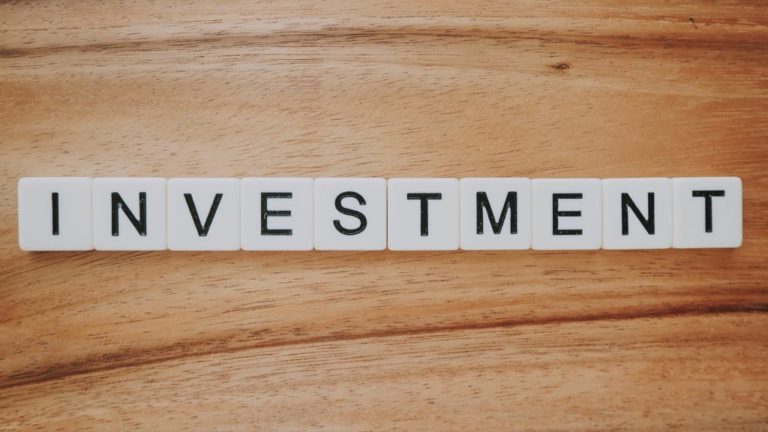Your website is your company’s digital storefront, and a primary tool in your marketing strategy. By following just a few best practices, it could be a customer generating machine for your business.
What are they? Let’s jump in…
First: How is your website currently performing?
First, let’s take stock. Before you can even start to make changes to your website to ensure it’s generating leads at its max potential, you need to understand how your website is currently performing. There are plenty of free tools on the internet that can tell you how your website is performing, but we’re going to look at how you can test it using Google’s Webmaster tools.

Try Google Webmaster Tools (it’s free)
Google’s Webmaster tools (also called Google Search Console) is a free platform that anyone with a website can use to monitor how Google’s search engine views their site. All you need is a Google account and you can login to Webmaster, input your website, and it will automatically start tracking the data for your website. Before you are given access to that data though, Google will require you to verify that you are indeed the owner through one of five different verification methods.
After you’ve verified that you’re the owner of your website you can start combing through the data Google has on your website. The first time you look at Google Webmaster tools it can be pretty overwhelming. But there are plenty of helpful guides and tooltips to make sense of all of the data and graphs that the tool provides you with.
Next, we’ll give a brief overview of what you can discover (and diagnose) in terms of performance, keywords, mobile visitors, and more.
The Performance Report shows you your sites overall search performance on Google as well as how many clicks you get, your sites click-through-rate (CTR), and your average ranking position. You can also click queries, pages, countries, devices, search appearance, and dates to get insights into the who, what, when, where, and why of your web traffic.

So, you’ve got the platform open and you’re poking through the data only to find that your site’s click through rate is worryingly low. Click-through rate (CTR) is how many people actually clicked your link vs. how many people saw your link on the search engine results page (SERP). This is a key ranking factor to fix ASAP. But how?
Improve page titles
Your page titles are the most prominent part of your search results, and as such they need to be eye-catching. Focus on making your page titles short and to the point, but with exciting language. Don’t just go with the first title that comes to your head, either. Try out a few different headlines and test what works best (using the numbers you see in Google Webmaster tools).
Also don’t forget to use proper formatting. A title is less appealing to click on if it’s been cut off. Keep your title under 60 characters.

Need more pointers on page titles? Read: How to use your website’s title tags to improve your presence in local and national search
Ready to Bring Automation to Customer Loyalty?
Members get access to Ride Club Rewards & Ride Club Engage, flexible customer loyalty packages that supercharge customer engagement and repeat business. Schedule a demo today to check them out!
Improve your page descriptions
Meta descriptions are the text that appears beneath the result title and link. The meta description allows you to tell visitors more about what they’re going to get if they click through to your page. Make sure you have a custom description for each page, otherwise Google will simply pull any sentence that has the search keyword in it, which can cause your descriptions to not make sense. And if the description doesn’t make sense, why would a searcher think that the rest of the page would?
Meta descriptions are your elevator pitch to potential customers, so make sure you use those 160 characters effectively.
Make sure your URLs are descriptive.
Use keywords here, as it will help searchers and helps with SEO for the page. Whether posting for blogs or web pages, make sure to use categories as they give more opportunities to use keywords and raise search engine visibility. URL’s that use descriptive categories receive 25% more clicks, which can go a long way if your CTR is low. The ideal URL to increase click-throughs should look like this:
http://www.example.com/trek/mountain-bikes/town-name-bikes.html
The keywords to the kingdom
Keywords, for the uninitiated, are the search terms that people enter into search engines. “Mountain bikes”, “tree cutters”, “carpet stores”, are all examples of keywords from different industries but so are phrases like “best bikes for trails in North Carolina” or “Best type of carpet for homes with pets”.
To rise up the ranks, you need to make sure that every page of your website is properly optimized for the keywords that your customers are going to be searching for and the questions they want answered.

Now, this doesn’t mean trying to cheat the system by spamming the keywords over and over on your website. Google will pick up on that and penalize you in the rankings real quick. They need to be organically included in your website’s copy.
You need to have a variety of keywords to make sure you’re covered for the wide variety of terms your potential customers will be using. This includes a variety of short, “common sense” keywords, locally focused keywords, and “long tail keywords”.
The “long tail” keyword
Long tail keywords are three to four word phrases that are very specific to your products or services. While most “regular” one or two word keywords have a high degree of competition, long tail keywords give you a great opportunity. You’ll also attract warmer leads with long tail keywords; someone who searches for “Mountain bikes for easy trails and gravel” is much more ready to buy than someone who searches for “bike stores”.
Here’s a great example from the optimization specialists at SEMrush

When “tomato plants” has 20,000+ searches a month, claiming the top spot is hard. Successfully ranking for multiple “questions” instead (all with their own product needs), is often an easier path to more eyeballs.
Finding the right keywords
How do you figure out which keywords and long tail keywords you should use? Research. There are plenty of free keyword research tools on the internet that you can use, like the Google keyword planner, which will tell you the strength of the keyword or long tail keyword that you entered as well as give you suggestions for similar keywords that you can use. If they make sense for your business use some of these suggestions to help diversify the keywords in your website’s copy.
Another great suggestion for free keyword tools is Neil Patel’s Ubersuggest
Don’t forget: If you serve customers in your local area, localize your website content to include the city or state in some of your keywords to make it easier for the locals to find you.
Desktops?! Where we're going we don’t need desktops
In 2019 around 60% of organic search visits came from someone using a mobile device, whether a smartphone or tablet.
Searching on mobile devices has become so prevalent that Google now weighs a user’s mobile experience on a website higher than they do a desktop experience.
If you or someone on staff has the technical skills to manage this, you can take care of this problem yourself. If you don’t then you need to find a trustworthy provider who can help ensure you’re not losing valuable customers.

Your customers have the need for speed

Remember back in the late nineties and early aughts when it was normal for a webpage to take a few minutes to completely load, and that was normal and acceptable? Yeah, not anymore. 37% of visitors bounce (the technical term for leaving your website before leaving the entry-page) if your site takes 5 seconds to load, and 70% say that slow site speed negatively affects their purchasing decision.
We are creatures of instant gratification, and if we can’t get that gratification fast enough we’ll go somewhere else for it. Improving site speed should be a top priority. Not only will it help your SEO, it will give visitors a reason to stay on your site and potentially convert into customers.
There are plenty of free tools on the internet to test your site’s load speed. If you’ve found that your site speed is not ideal you’ll need to minimize HTTP requests, reduce server response times, enable compression, optimize images and CSS delivery, enable browser caching, and prioritize above-the-fold content.
If all of that sounds like gibberish – you might need a hand from an SEO expert or web developer, and many providers include this as a baseline service.
If you take care of your website it will take care of you
Business today revolves around the internet, and specifically a business’s website, so if you’re not investing in your website to make sure that it is the best possible representation of your business and brand, you’re going to find yourself losing out on customers and falling behind your competition. So get ahead of the game and turn your website into a customer generating machine.





